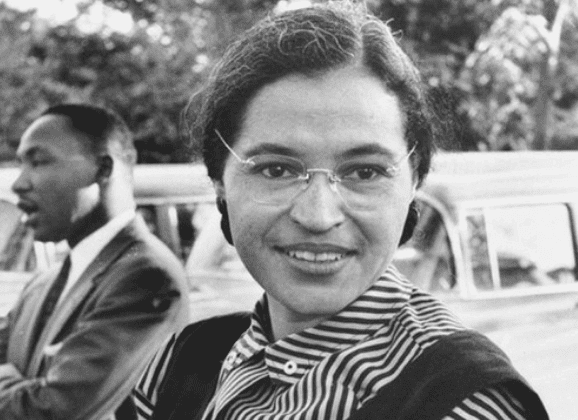Discover the biography of Rosa Parks, the woman who sparked one of the most important protests during the African-American civil rights movement in the United States.
He did so with a simple but very powerful gesture, refused to give up his seat on a bus to a white passenger, this little fact of Rosa Parks’ life can teach us a lot about racism and social psychology.
- Of course.
- She was arrested and imprisoned for it.
- Such a situation led to what would later become known as Montgomery’s bus boycott.
- Encouraged by Martin Luther King as an act of civil disobedience.
- These demonstrations eventually abolished the laws of racial segregation in force until then.
The racial segregation law forced African-Americans to occupy the back seats of public buses. The front seats were reserved for the whites. In the middle of the bus, there were seats that could be used by everyone indiscriminately. These banks should always be provided by African Americans to white people.
Rosa Parks’ refusal to give up her seat was the initial kick-off that led to the creation of the Civil Rights Act of 1964.
The daughter of a teacher and carpenter, Rosa Parks lived in the era of racial segregation in the United States. He graduated from Alabama State Teachers College and married Raymond Parks.
Rosa’s childhood took place in a context of very strong racial segregation, could be seen in public baths, schools, transportation, restaurants, etc. , Rosa had a strong memory of her grandfather, at the door of her house, with a shotgun as the Ku Klux Klan walked down the street.
She joined the cause that championed the Scottsboro Boys with her husband. The Scottsboro Boys were a group of black men wrongly accused of raping a white woman.
He was also a member of the NAACP, the National Association for the Advancement of Colored Persons or the National Association for the Advancement of Colored Persons, in direct translation into Portuguese.
During her youth, Rosa worked at Maxwell Air Force Base. Maxwell was federally owned and did not allow segregation. Rosa used to say the company had opened her eyes.
Social psychology explains that racism is based on the process of categorizing people, specific characteristics are assigned to a particular group and this is done based on a supposed identification with another group that is considered superior. The analysis of racial discrimination and prejudice includes three main concepts:
Oppression and inequality are closely associated. The factors that influence people to join social activism are mainly the perception of injustice by belonging to a social group, inequality and social emotions.
Some psychosocial theories have tried to explain the phenomenon of boycott to Montgomery buses, but it seems that emotions can give the best explanation (Ruiz-Junco 2013 and Bosco 2007). Shared humiliation emotions developed strongly among oppressed people, as well as other emotions such as courage and determination.
A. Jasper, in a 2011 study, concluded that a person needs to feel both negative and positive emotions to become a social activist. Social activism doesn’t exist if you just feel negative emotions. Emotions play an essential role in social identity and behavior.
Rosa Parks has repeatedly explained that on this fateful day she refused to get up and give her seat on the bus to a white passenger because she was “tired. “And it wasn’t just the physical tiredness of a late day back home. Rosa was tired of being treated like a second-rate citizen.
He was tired of injustice and unequal treatment; In addition, courage and determination also motivated their social disobedience.
Rosa Parks worked for the rest of her life in the fight for civil rights, she was the one who taught us that the world can change in a day with a simple gesture.
On the day of his death in 2005, all Montgomery buses drove with the front seats reserved with a black bow with a name: Rosa Parks.

